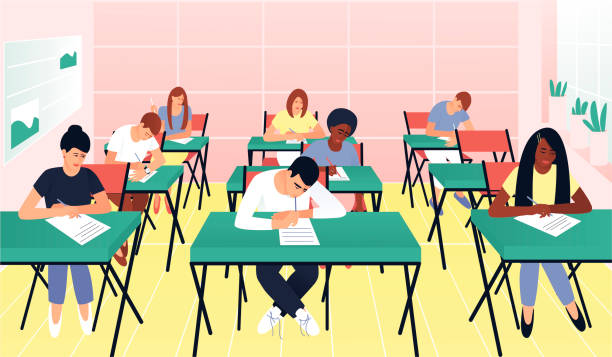Northwood High School has had many classes within the last few semesters noticeably shrink in size. With many classes almost half the size of what they used to be, teachers are trying to reach out to students and encourage them to take more in-person elective classes. Some strikingly smaller classes include Speech and Debate, Journalism, Horticulture II, AP Music Theory and Dance III. There are also questions about whether or not the smaller class sizes are taking away opportunities from students.
For example, Dance III had only one student for its fall semester, junior Avery Adams. In this instance, she did not get all the opportunities she would if there were more students in the class.
“The student who is in Dance III is not getting the full experience simply because they only see their work; they aren’t receiving any peer evaluations,” said dance teacher Kristen Oakes.
For many classes, the smaller roster presents students with more opportunities, but Dance III is different. Dance III is an upperclassmen class that has students choreograph and critique each other’s dances. This class is only offered once a year. If a student has a required class they need to graduate and Dance III doesn’t line up with their schedule, they won’t be able to take the class. That could be a reason for the decline in students for this class. Oakes, who has been teaching this specific class for five years now, still believes Seaforth opening up and available CCCC classes are also part of the reason for a smaller class size. With only one student in the class, she won’t receive feedback or help from other students. The two work around this and are still able to choreograph dances, but Oakes doesn’t feel she is getting the full experience she would with a class full of other students.
Adams still makes the most of her time in class. The benefit of only having one student is that she gets to customize her dances more than usual, and gets more one-on-one time with Oakes.
“I loved class with Mrs. Oakes, we had a blast,” said Adams, “I was able to personalize the lighting for my own dance and do other things that weren’t normally done in that class, like organize the costume closet.”
However, for other classes, small class sizes create new opportunities that would not be possible with more students per class. For Horticulture II and Speech and Debate, the students get more hands-on experience and activities. There is speculation that the smaller class size is due to Seaforth High School opening up back in 2021. Teachers who have been working here long before Seaforth opened have seen a big drop. Elective class sizes are now an average of half of what they used to be.
Speech and Debate, which Jill Thomas has taught for the past eight years, has had a class of up to 30 students. Her smallest class was two years ago; it had 10 students. Although Seaforth High School took away many students, she believes the shrinking class sizes has to do with the numerous Central Carolina Community College (CCCC) classes now available to students at Northwood.
“I think CCCC was the initial cause, the classes are easier, simpler, and more credits; the students get to sleep in and leave early,” said Thomas.
Thomas feels this class is just as meaningful as the other English classes she teaches. Speech and Debate teaches skills used for years to come and is a required class in some states. She sees the greatest amount of academic growth in this class than in any other class.
“I encourage students to step outside their comfort zone,” said Thomas, “I also encourage them to participate in a world rather than their bedroom”.
Laura Smith, who has taught Horticulture for more than a decade, agrees with Thomas that the shrinking in class sizes provides more opportunities to students. Although her biggest class size has only been 14, she has had a class as small as six students. With this class always being relatively small, it is hard to pinpoint the reason for the decline in numbers. The Horticulture II class spends much of their time in the Greenhouse nurturing different plants. With fewer students present, there is more room and opportunity for hands-on learning.
“Opportunities come from what’s presented to them. We do a pretty good job of giving the kids a lot of opportunities,” Smith said.


